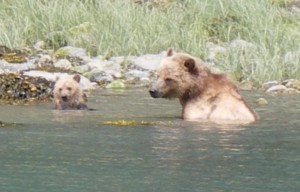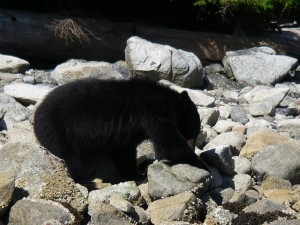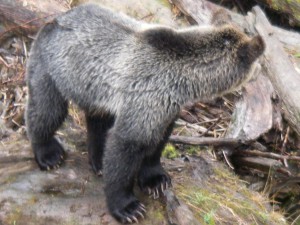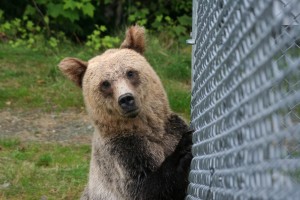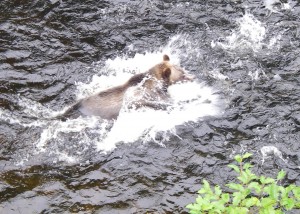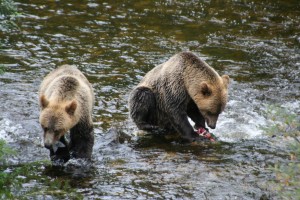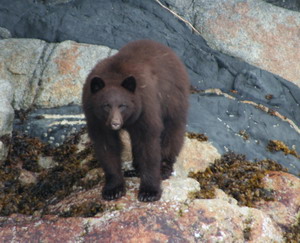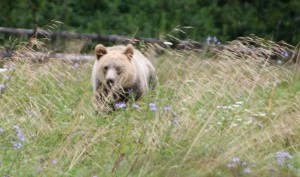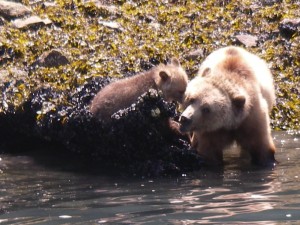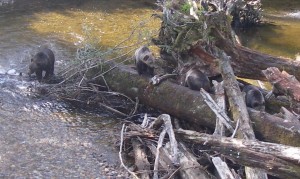The end of July and if you were wearing a fur coat all the time you might want to spend sometime in the water. This morning on the lodges grizzly bear tour up Knight Inlet to the Glendale River estuary a mother grizzly and her cub spent the better part of an hour soaking in the water. The water in the cove is a mixture to fresh and salt water with enough fresh that the grizzlies will drink the surface water. It s also a good time for this six month old to become more accustomed to the water. The cubs will follow their mother into the water at a younger age but it is with reluctance.
